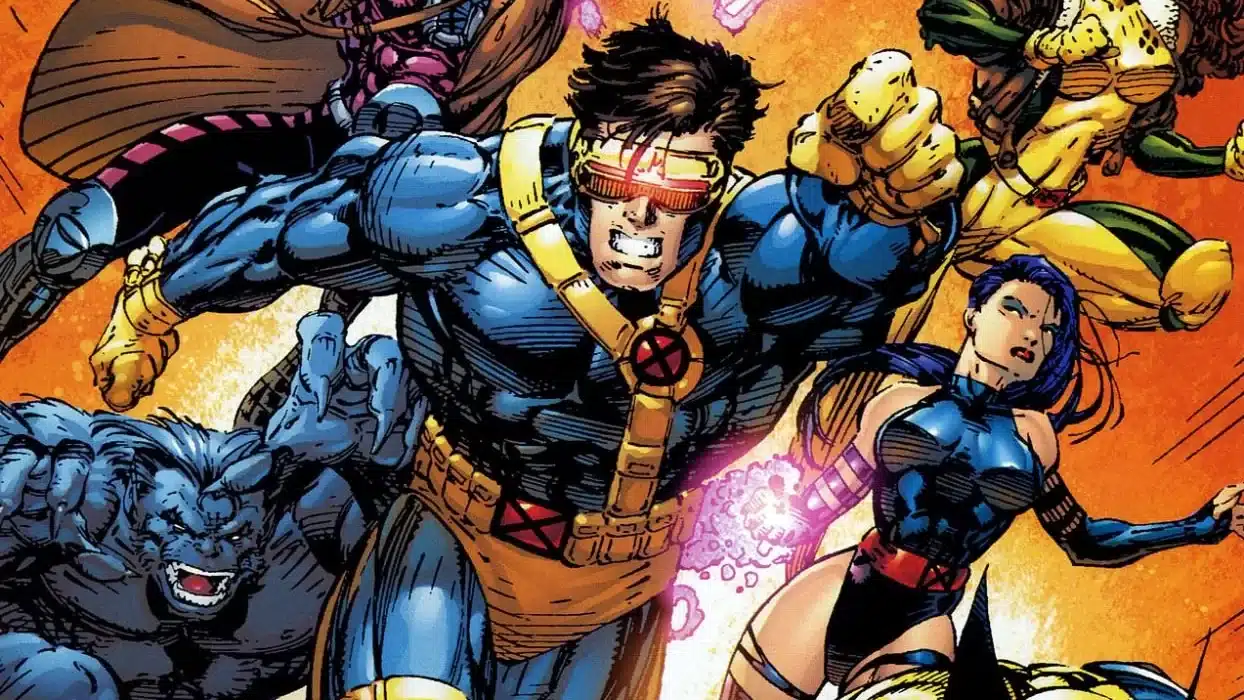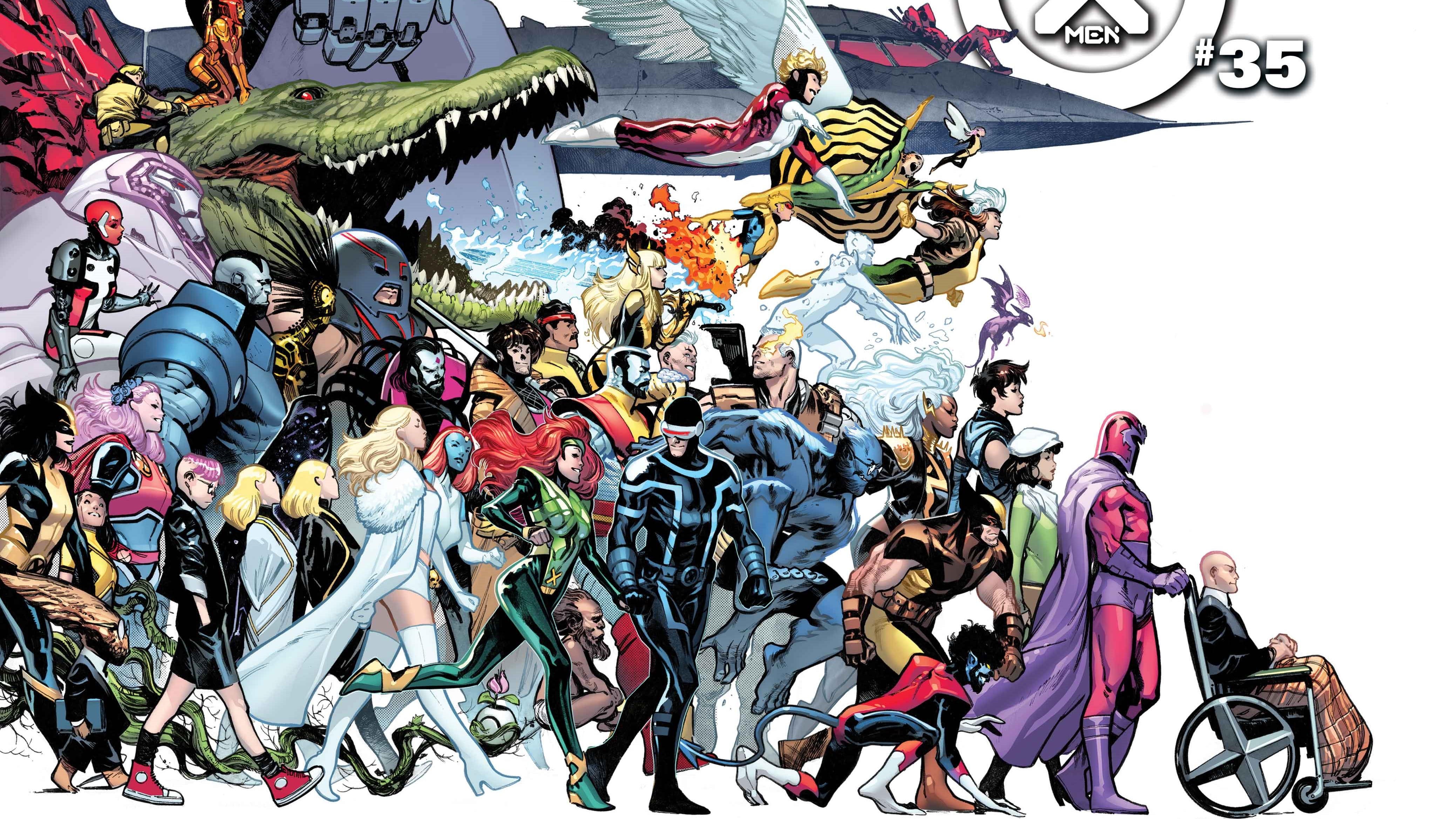This comes to us from Lincoln Crisler. Lincoln’ genre fiction credits include a contribution to IDW Publishing’s Robots vs Zombies anthology and editorship of Corrupts Absolutely?, an anthology of dark superhero fiction. A career non-commissioned officer in the United States Army, he currently lives and works in Europe with his wife and son.
Marvel’s X-Men office kicked off 1995 in spectacular fashion. Twenty years prior, Giant-Sized X-Men #1 had ushered in a new group of mutants and rescued the title from reprint obscurity. A mere four years in the rear-view, Chris Claremont had said his final (at that time) words after seventeen years on what he had grown into a franchise. And now, the X-Men’s world would be shaken up again.
January 2020 is the twenty-fifth anniversary of the Age of Apocalypse. To some fans of a certain age (pun intended), this may cause some alarm. In others, it might inspire envy–readers today can enjoy the entire epic in perhaps a long weekend, instead of waiting to read it issue-by-issue, with no Reddit or social media to tide them over! And the entire alternate-universe saga begins in the mainstream universe with a little arc called Legion Quest.
The Eighties X-Titles under Claremont and Simonson had a cohesiveness that modern comics can only aspire to. The small cabal of creators running X-Men, New Mutants, X-Factor, Excalibur, Wolverine and various limiteds all had something like a hive-mind that lent itself to a rather pleasing sort of continuity–if Logan were on a big adventure in a limited series or his solo, he might be missing from the main X-Men title for a month or two, for instance.
That rhythm was thrown off for a bit when Claremont and Simonson were replaced with Jim Lee, Rob Liefeld and Whilce Portacio. After around a year, those folks all left to form Image, and the new writers–Scott Lobdell and Fabian Nicieza, along with X-Factor’s Peter David–eventually formed a similar gestalt. By the time Legion Quest hit the shelves, for example, Scott and Jean had been married for about nine months (our time) and had had their honeymoon in the future. Multiple Man had died of the Legacy Virus around the same time. The Phalanx Covenant happened. Emma Frost and Sean Cassidy opened a new Xavier School.
Legion Quest truly begins with X-Factor #108-109. Later, we’ll have a tie-in issue of Cable, as well. You can read the actual four-issue arc without either supplementary title, and I’m pretty sure my middle-school self did, but in the finest tradition of the Claremont era, the additional material adds to the event rather than detracts. From the start, we see the old-school X-Men writers’ brand of gestalt here at work. If we were to reverse-engineer a story about Legion coming out of a long coma to change his father’s life forever, it would have to begin with Mystique.

If you blink, you’ll miss it, but Legion, under the influence of the Shadow King, kills Destiny off-panel while the Reavers and Freedom Force fight in 1989’s Uncanny X-Men #255. A bit later in Uncanny #280 and X-Factor #70, the Shadow King (he was a massive villainous influence during this period of the books) is defeated and Legion ends up in a coma for the next five years of comics. Freedom Force dissolves as a direct result of this fracas, and we get the new X-Factor team in issue #71 of that title. I always enjoyed how the 90s X-Teams did their own things, had their own interpretations of Xavier’s dream, but were inextricably intertwined.

Legion Quest itself opens in media res (Uncanny X-Men #320) and I still remember how hard it was to figure out where the story was going next. Legion’s never been a straightforward character. Looking back, one can see the seeds planted a few months in advance, in both X-Men titles, but exactly what Legion wanted to do, how he was going to do it, and whether the X-Men would be able to stop him? No clue. And to me, that was part of the beauty of an entire six months’ worth of comics. Heroes and villains die all the time. By the time Age of Apocalypse occurred, we’d even seen Superman die and return. The uncertainty was a welcome change of pace.

The middle chapters of the arc (X-Men #40 and Uncanny #321), heavily explore the relationship between Charles and Erik in their younger days, before either was a mutant idealogue with devoted acolytes. Xavier in particular is fresh off his early encounter with the Shadow King, and he suspects his friend Erik may be another mutant (it’s worth noting that this isn’t even writer Nicieza or artist Andy Kubert’s first dance with this era of Xavier’s life: Kubert did some fill-in art on Uncanny during the Muir Island Saga, and Nicieza wrote some X-Factor).
The relationship between Xavier and Magneto has at times been a very important driving force in X-Men stories, and the four-year period encompassing Fatal Attractions through Onslaught is one of these. Having so recently (in the comics) seen Xavier deal with Magneto in such a final matter as wiping his mind and rendering him catatonic–and for 21st-century readers, knowing what’s about to happen in the next couple issues–makes these pages bittersweet. One of the best things about Legion Quest is how much time we get to spend with this Charles and Erik who are new friends and don’t even know each other are mutants. The last large chunk of history from this era was probably Uncanny #161 from 1982. And lest we forget, Part Three opens with one of the best X-Men scenes ever–Professor Charles Xavier and Magneto in an actual bar fight.

Besides that, we get a lot of good character interaction between members of the X-Men, especially in Uncanny #321 and Cable #21. Call me old-fashioned, but I remember when some of the best issues of X-Men didn’t have a single punch in them, and some of that is present in Legion Quest. It’s appropriate, considering this was supposed to be a send-off to everything we’ve known before Apocalypse takes over completely. We get some time with the Beast, by himself and with Archangel. Some of the classic couples of this era get their moments: Scott and Jean (by themselves and with the Professor), Gambit and Rogue, Cable and Domino…and Scott, Jean and Cable.
While I’ve always had a soft spot for the Original Five, this era has always been a sweet spot because of how much Scott and Jean’s relationship is highlighted. Throughout the Claremont Era, we had Jean’s death, Scott’s subsequent romances with a cosmic entity and a clone of Jean, and then all the wonderful soap opera of X-Factor and Inferno in particular once Jean returned from the dead. Lobdell and Nicieza’s run was truly their time to shine, with the X-Cutioner’s Song crossover, their engagement and marriage, and the twelve years they spent two thousand years in the future raising young Nathan Christopher in The Adventures of Cyclops and Phoenix, right before Legion Quest took place.

The final chapter, X-Men #41, opens up in the past with Erik–not even Magneto at this point–fighting Legion, who is of course trying to kill him. While this is going on, we get a huge piece of critical foreshadowing–the awakening of Apocalypse in response to this unforeseen turn of events. It’s hard not to feel bad for Erik in the subsequent pages. He’s a fresh idealist, not at all the guy who ripped out Wolverine’s adamantium in Fatal Attractions just a year and a half before in the comics, and he’s under attack by a ranting powerhouse even younger than himself. Charles throwing himself in front of David’s psychic knife feels like a natural occurrence, given what we’ve seen of the two mens’ friendship in recent issues. Charles dies. Everything changes.
And Bishop, Mr. Chronal Anomaly, is left behind.
This will become important very soon.
That’s not to say the story is altogether flawless. The M’Kraan crystallization wave seems to be shoehorned into an otherwise perfect plot. Legion going back in time to mess with the X-Men’s history alone accounts for all that happens going forward. It seems unnecessary, but doesn’t hurt anything. The relationship between Legion and his mother has some dark implications as well. But these flaws fade into the background as we enter the Age Of Apocalypse.
Zachary Jenkins runs ComicsXF and is a co-host on the podcast “Battle of the Atom.” Shocking everyone, he has a full and vibrant life outside of all this.






